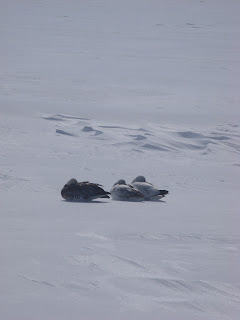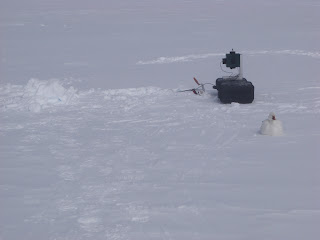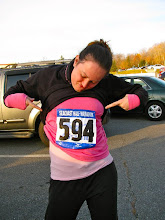So when I said I would be busy, I had no idea just how busy. Turns out I'm
really busy; mostly in the morning but also on and off during the day.
Fortunately I have fallen into a routine which makes getting through the day a little easier. Writing out the entire routine would probably make for one lengthy post (not that my posts are brief), so I figured I break up my daily tasks into different posts.
With each project requiring daily (sometimes more frequent) snow samples, nearly 80% of my daily tasks involve digging in the snow. What keeps it interesting (and also potentially confusing!) is that the snow samples differ quite a bit. Each of the four snow sample sets have a different purpose and thus come with different sampling procedures and materials.
Perhaps the least technical of the snow samples are a set for the albedo project which is examining the influence of black (or elemental) carbon on snow albedo. Albedo describes how much incoming solar radiation is reflected back to space. A value of 1 then means that all the radiation that reached Earth's surface is reflected back which a value of 0 indicates all that incoming radiation is absorbed. Pure, white snow has a very high albedo in the visible wavelength range (the light we see) which means it reflects much of the light that hits it. Oppositely, dark surfaces, like pavement or the ocean, have a very low albedo. As you may guess, this reflection/absorption of light is closely linked temperature; those absorbing surfaces with low albedo tend to cause warming of the surface while bright, reflective surfaces with high albedos tend to cool. A good way to think about this is t-shirt color. On a hot summer day, you will be hotter wearing a black shirt than a white one. Of course, there are other factors that determine just how warm a surface gets that are independent of albedo (e.g., specific heat) but there is certainly a very strong correlation between albedo and temperature.
Recent observations have shown that the Arctic is warming at a faster rate than any other place on the globe (a cool animation showing this can be found here: http://svs.gsfc.nasa.gov/vis/a000000/a003800/a003817/2010updatewithdates_30fps.m4v ... Warmer colors indicate the listed year was warmer than the 1951-1980 average for a given region, cooler colors were cooler years). Why this is happening, however, remains unclear. One thought is that the influx and deposition of dark particles such as black carbon (a.k.a., soot) to the Arctic from the populated regions to the Arctic's south is decreasing the albedo. Since the Arctic is naturally so bright, even the slightest decrease would increase the amount of heat trapped at the surface which in turn would increase warming. The albedo project aims to understand this phenomenon.
Considering the importance of the snow (and the soot potentially deposited on it), it is no surprise that the albedo project requires a number of snow samples. It is also not surprising that one of the snow sample sets is for OC/EC (organic and elemental (black) carbon) given the interest in the influence of black carbon on snow. What
is surprising is how simple these measurements are.
As many of you know, my primary area of research is atmospheric chemistry. For some of you this conjures up an image of me running around like a maniac with a jar in hand, trying to "catch" air so I can study it. While this isn't quite the case for my atmospheric work (though it's not far off!), it is 100% true for these OC/EC samples. Every day, I shove 10 glass jars into the snow to collect possibly the most important component of the albedo project. Here are some action shots of me doing just that (photos courtesy of Nina).


What are those things are your arms, Chelsea? Why those are insemination gloves! I wear them for the OC/EC samples (as well as for most of the other albedo snow samples) to avoid contaminating the samples. Humans, after all, are high in OC!
After collection, the ten jars chock full of snow are reduced to this (thanks Nina for these photos too!):

A quartz fiber filter. As the OC/EC instrument uses this type of filter to quantify OC and EC, filtering the samples through it is the only way to measure these species. Samples are filtered using this contraption:

Sample is poured in the top and sucked through the filter (sitting on top of the black rubber stopper) using a pump (not in picture; it's on the floor). One filter is used for all ten samples to ensure there is a detectable amount of both OC and EC. This makes me (and perhaps you) feel a bit better about the color of the above filter; in order to be that brown, several liters of water had to be filters. Still though, the filter color does suggest Greenland snow may not be as clean as you'd think! It also means we may get some interesting results with respect to black carbon and snow albedo after all; always the goal in science!














